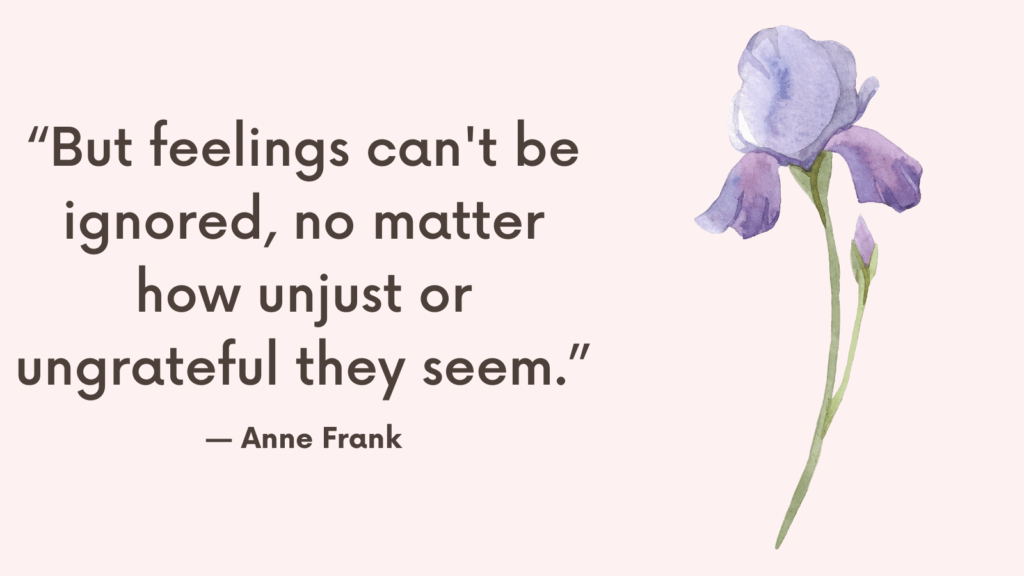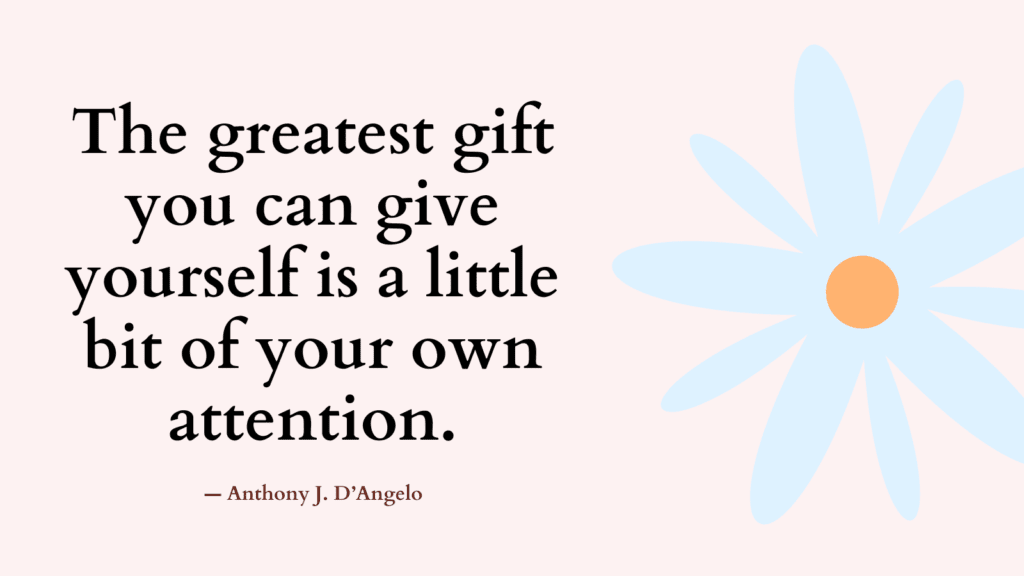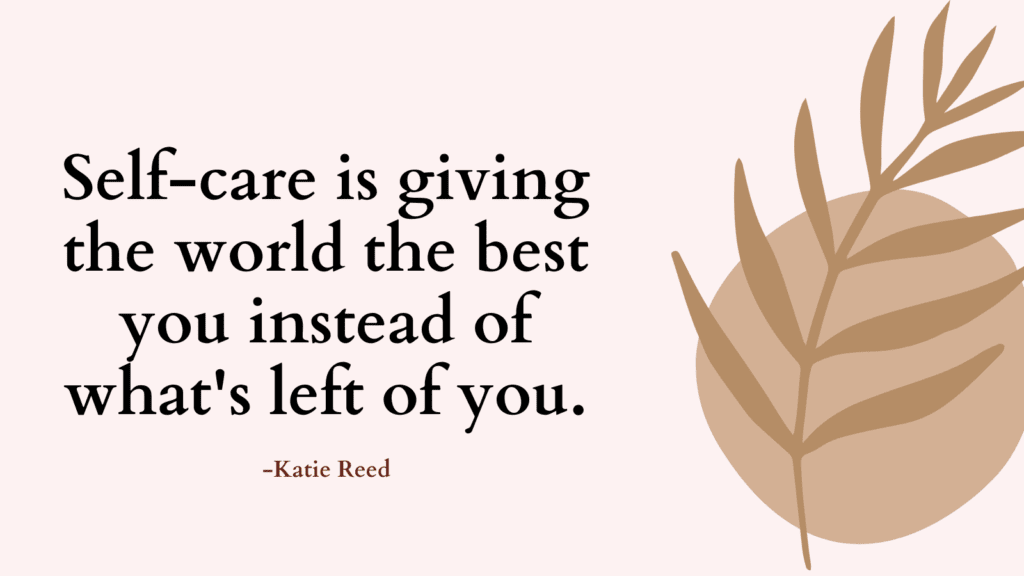Today, you’re going to find out if you have a problem with emotional eating through this “Emotional Eating Quiz” and learn how to break emotional eating forever using powerful strategies.
What Is Emotional Eating?
Emotional eating (or food addiction or stress eating, or comfort eating) is using food to suppress or soothe painful emotions, such as boredom, stress, anger, sadness and loneliness.
Major life events or, even the hassles of daily life can trigger painful emotions that lead to emotional eating. (*)
Many people try to lose weight and go on different diets only to regain the weight they’ve lost.
This is mainly because eating behaviors are rarely the problem. Limiting beliefs driving the eating behaviors and emotions that may be out of control are the real problem. (*)
Emotional Eating Quiz
Results
#1. Have you ever wanted to stop eating but you just couldn’t?
#2. Do you constantly think about food?
#3. Do you eat differently when you’re alone than you do in front of other people?
#4. Has a family member ever approached you with concern about your eating habits or weight?
#5. Do you eat to escape from or numb your feelings?
#6. Do you eat when you’re not hungry?
#7. Do you tend to overeat when bored or lonely?
#8. Do you frequently feel ashamed about what you’ve eaten?
If you answered YES to any of these questions, you may be a food addict.
How To Stop Food Addiction And Emotional Eating Forever?
#1. Stop Destructive Eating Behaviors
1. Acknowledge that Eating Behaviors Are Not the Real Problem
When addressing weight issues, most people focus on the surface behaviors such as bingeing or overeating, and body dissatisfaction.
While these behaviors can create financial issues, health problems, and general unhappiness, they are not the root cause of your food and weight issues.
It’s the limiting beliefs driving the eating behaviors and emotions that are out of control that constitute the real problem.
For this reason, only addressing surface behaviors doesn’t solve the problem.
However, these eating behaviors are a form of avoidance.
Rather than facing your pain, you use emotional eating to soothe yourself. (*)
So it’s not until you stop these behaviors that you can learn to cope with difficult emotions in ways that don’t involve food and have the space to recover who you are.
2. Identify Your Destructive Eating Behaviors
The eating behaviors may include:
- Bingeing (eating a large quantity of food in a short period of time)
- purging (through forced vomiting, excessive exercise, or by taking laxatives or diuretics)
- hiding or hoarding or stealing food or eating in secret
- overeating under stress or when you’re tired
- Restricting (e.g. not eating all day)
- using illegal drugs to manage your appetite
- dieting or using diet pills
If you use other eating behaviors include them too.
Related: How Do You Know If You Have Eating Disorders and How to Manage it?
3. Ask Yourself, “Do I Really Need to Eat That?”
Everything you do, you do it for a reason, including your eating behaviors.
It is important to dig deeper and try to understand what drives you to use food the way you do.
Difficult life experiences can often lead us to believe that we need food to treat, reward, or comfort ourselves.
In fact, our eating behaviors are controlled by two parts of the brain.
One part (the hypothalamus) controls the need to eat for survival. Another part (the dopamine reward center) controls our desire to eat.
Sometimes, the desire for a certain taste or a certain food can override the need to eat for survival. This is what leads to emotional eating, binge eating, and obesity.
Keeping this in mind, ask yourself regularly, “Do I need to eat this, or am I using food for comfort?”
While there is nothing wrong with eating tasty treats when you use food for comfort and as a way to cope with stress, this eating behavior becomes problematic.
It is important to interrupt this cycle in order to overcome your emotional eating and manage your weight.
#2. Address Limiting Beliefs Around Emotions
Whether directly or indirectly, as a child you might have learned this message that certain emotions are wrong and should be suppressed.
You may have been told, “Boys don’t cry,” or, “Be a good girl.” This may have caused you to avoid expressing your anger, hurt, sadness, etc.
If you grew up believing that it is not acceptable or safe to express emotions, this could have led you to invalidated emotions through emotional eating, purging (self-induced vomiting), or self-harming behaviors.
Positive Beliefs About Emotions
- I have a right to feel my feelings.
- No one can tell me what I “should” feel, even me.
- I don’t have to defend my feelings.
- All my feelings are okay, even anxiety and painful feelings.
- Allowing myself to feel my emotions is healthy.
- My feelings are a valuable feedback about what’s happening in my world.
- What I’m feeling will eventually pass.
Related: How to Challenge and Change Your Negative Core Beliefs?

#3. Manage Your Emotions In Healthier Ways
1. Acknowledge that Emotions Are Not The Problem
Many people with food and weight issues have a hard time managing their emotions.
Some would shut down any access to their emotions and would even have trouble identifying what they are feeling, while others feel overwhelmed with intense emotions.
Both are unhealthy reactions to emotions. In fact, it’s not emotions that are the problem, it’s the way you deal with them.
When you avoid or suppress your emotions, they find expression in the foods you eat, which may be soothing momentarily but eventually exacerbate the problem.
Managing your emotions requires emotional intelligence – that is being able to identify, express, and regulate your emotions.
Related: 6 Simple Ways to Manage Difficult Emotions and Control Them
2. Identify Your Emotions
One way to identify your emotions is to pay special attention to your body sensations.
Ask yourself: What am I feeling in my body? What emotion is this?
Use your journal to record emotions you experience regularly.
The more you check in with yourself and pay attention to your body sensations and emotions, the better you get at identifying your emotions.
Also, pay attention to your emotional expression patterns. Do you tend to binge when feeling overwhelmed? Do you skip meals when you experience a desire to withdraw?
3. Understand Your Emotions Better
Emotions are a signal that draws us toward what we like and warns us away from danger.
Fear, for example, will push you to fight or flight or freeze in reaction to danger. Anger is a sign that we’ve encountered injustice. Guilt helps us self-reflect and make amends when we make mistakes. Sadness is a sign that something is not working and needs to be changed.
The tricky part is sorting out what is perception and what is real. When the danger is not real, fear can limit our lives. When guilt is not real, it can lead to feelings of shame about the person we are, rather than something we did, which is toxic and negatively affects our self-esteem.
Ask yourself: What is this emotion telling me about the situation I’m in? Is it real or perceived?
4. Practice Emotional Regulation
Emotional regulation begins in early infancy and continues as we grow older.
Some people may distract themselves by doing an engaging activity when they feel anxious, others may soothe themselves using their senses (smelling a nice perfume, touching a soft texture, hearing soothing music, watching something engaging)
People struggling with emotional eating often use food as their primary way of dealing with their difficult emotions.
Although this may provide momentary relief, it can only exacerbate negative emotions, usually leading to shame and body dissatisfaction.
To overcome emotional eating, you need to find healthier alternatives for emotional regulation.
Related: Are You Extra Sensitive? 9 Steps You Can Take Today To Reclaim Control Over Your Emotions
#4. Restore Your Connection to Your Body
Painful past experiences may cause you to experience negative feelings about your body, which can lead to a disconnection between you and your body.
You might have also tied your self-worth to your body size or shape, which is causing you to use unhealthy ways to lose weight.
Changing your relationship with your body is an important step to healing.
Exercise: Connect With Your Body
1. Sit in a comfortable position where you will not be disturbed.
2. Allow any thoughts you have to pass. You may find it helpful to imagine placing each thought on a leaf on a stream and watch it as it floats away.
3. Breathe deeply. With each inhale imagine your breath flowing into your body from the top of your head to the tips of your toes.
4. As you breathe out, imagine all the air being collected from every part of your body and released.
5. Now, focus your breathing on one part of your body (face, neck, chest, arms, belly, back, hips, thighs, knees, etc.) at a time. Notice any feelings or unwanted judgments and release them as you breathe out.
Related: 6 Simple Ways to Practice Mindfulness Throughout The Day (and Find Your Inner Peace)
What Is Body Image?
Body image is the picture you have in your mind of your body.
When you are dissatisfied with your body, you hold a negative picture, which can trigger compulsive overeating, binge eating, emotional distress, depression, etc.

#5. Learn the Joy of Eating Well
The joy of eating well is about enjoying what you eat and restoring your individual tastes and body wisdom to its rightful role as a guide to the weight that is right for your body.
It’s about finding an eating style that feels right for you and listening to your body to determine when you’re hungry and when you’re full, but also to determine what’s right for your body.
If you’ve lived as a chronic dieter most of your life, you may feel confused about what to eat, or how to listen to your body.
If you to eat all day long, your body may not ever get the chance to send you a signal of hunger.
Ask yourself;
- Do you like certain flavors: sweet, salty, rich food, bold?
- Do you enjoy eating with certain people?
- What ambience do you like to set at home? Do you like using candles? Certain mats?
- Do you like trying new types of foods, or ethnic cuisines?
#6. Use a Plan
Focus on nourishing your body without following specific diets or restricting your food intake.
1. Eat three meals and one snack daily
Experts agree that eating every three to four hours is good for your health and your weight.
Eating regularly will also prevent insulin release that causes your body to store fat.
2. Eat protein at every meal
Protein reduces cravings and controls appetite through the release of good chemicals, such as serotonin and dopamine that help stop cravings. (*)
protein could be found in:
- nuts (including nut pastes) and seeds – almonds, pine nuts, walnuts, macadamias, hazelnuts, cashews, pumpkin seeds, sesame seeds, sunflower seeds
- legumes and beans – all beans, lentils, chickpeas, split peas, tofu.
- lean meats – beef, lamb, veal, pork, kangaroo.
- poultry – chicken, turkey, duck, emu, goose, bush birds.
- fish and seafood – fish, prawns, crab, lobster, mussels, oysters, scallops, clams.
- eggs.
- dairy products – milk, yoghurt (especially Greek yoghurt), cheese (especially cottage cheese)
3. Eat at least three servings of vegetables and two servings of fruit a day
If you don’t like fruits and vegetables, try them in other forms, such as a smoothie, or a salad, etc.
4. Enjoy food in its natural state
Try to add less sauce, cheese and other camouflage. Allow yourself to enjoy food in its natural state and see which foods taste good to you and which don’t.
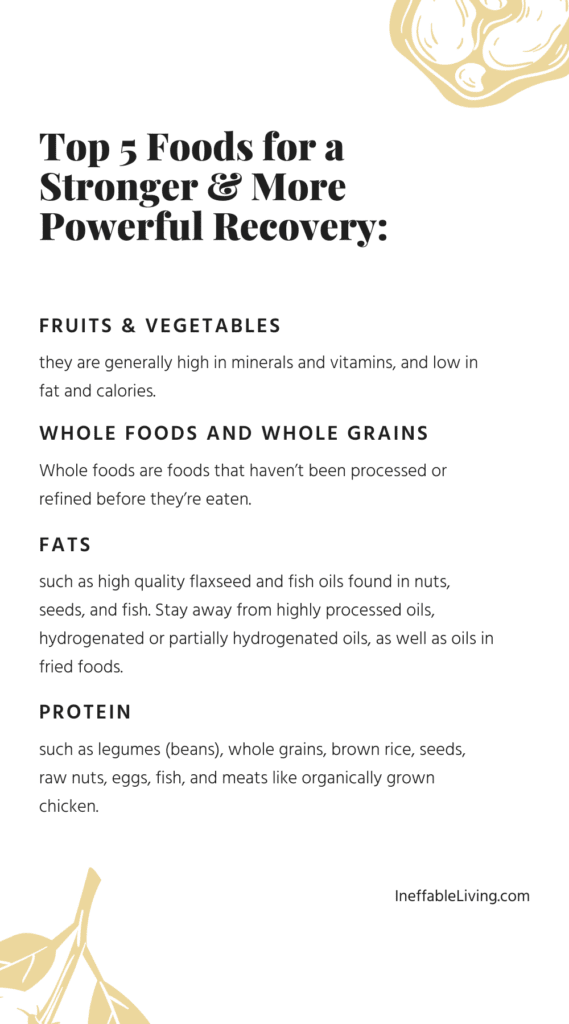
#7. Rediscover the Joy of Movement
If you don’t enjoy exercising, try learning the joy of movement.
This means, stop listening to voices of coaches, parents, peers, or anyone else who robbed you of the joy of being in motion and start exploring movement that brings your body joy.
1. Address Negative Beliefs Around Exercise
If you struggle with maintaining regular exercise, try exploring negative beliefs around exercise.
The following are some common ones:
I don’t want to exercise in public. I feel embarrassed by my size.
This is a common concern but there are different ways you can make yourself more comfortable like taking individual lessons or beginning with simple walking as you build your confidence.
You can also ask a friend you trust to join you at the gym
Exercise causes me pain, injuries, and other symptoms.
If you experience pain or other unpleasant symptoms after you exercise, try working with a professional trainer to ensure you are exercising safely.
I find exercising boring.
Exercise is not limited to going to the gym and walking on a treadmill. There are other forms of exercise you can choose from.
Perhaps you will find walking in the park or dancing more fun.
Keep trying different activities and see what you enjoy doing.
I don’t have time.
You can always find time for something if you really want to do it.
Moreover, exercise doesn’t have to take hours. Even 10 or 15 minutes a day can be enough.
You may even consider adding more movement to your everyday activities, such as parking farther, or using the stairs instead of the elevator or doing some stretching while watching TV.
2. Set an Exercise Plan
* Get appropriate exercise clothing that is comfortable and attractive.
* Schedule a time to exercise on a regular basis.
* Decide how you will begin. You may decide to take a class, join a gym, set up one session with a personal trainer, find a friend to work out with you, etc.
* Choose activities you would like to try (walking, dancing, swimming, yoga, martial arts, Zumba, tennis, basketball, weight lifting, etc.)
Related: 9 Proven Techniques That Will Help You Lose Weight Faster
#8. Reduce Stress In Your Life
Stress is one of the painful emotions that trigger emotional eating, which may sabotage any effort you make to solve food issues.
Some people consider stress the “pathway to obesity.”
Your task here is to learn how to use healthier ways to manage your stress.
This will require you to learn to identify the early warning signs and symptoms of stress by tuning in to your body and checking in with yourself regularly using mindfulness.
1. Identify Stress
Stress can be difficult to define. It feels different for different people and it’s caused by different causes for different people.
A happy occasion, such as a marriage or the birth of a child can cause stress.
Stress is the result of pressure you put on yourself (e.g. expectations, or fear of failure) or pressure from outside that exceeds your ability to cope.
It’s important to keep in mind that stress is not the enemy.
It’s simply a messenger that’s trying to tell you that you need to do something about the situation. Either get some help, slow down, address your fears, set realistic expectations, etc.
Stress can also be a motivator, helping you perform at your best to meet a deadline at work, or study for an exam.
Related: Wellbeing In The Workplace: 6 Ways to Improve Your Mental Health and Reduce Stress at Work
2. Manage Your Stress
Change your perception
What is stressful to someone might not be stressful to another.
Your perceptions and reactions are what make different situations stressful or not.
When you stop seeing an event as a source of stress and instead feel excited about the upcoming changes, the stress will diminish.
Accept the change
Change is only stressful when you resist it or try to avoid it.
This means that you have a judgment about the change – good or bad, right or wrong, or it should be this way, not that way.
Acceptance is when you allow things to be without judgment, such as saying, “It is what it is,” and leaving it at that.
This doesn’t mean that you like it or don’t work on changing it. It simply means that you stop wasting time and energy denying it and focus instead on how you can move forward.
Other ways to manage stress
Aromatherapy involves the use of essential oils like lavender oil to reduce stress.
Breathwork You can count your breaths. You can breathe in at the count of 4, hold your breath to the count of 7 and exhale to the count of 8.
Grounding techniques involve using your senses (e.g. looking at objects around you, noticing details of each, or feeling the sensation of the material around you, etc.)
Related: Definitive Guide to Relieve Stress Instantly and Lead a Peaceful Life
What To Replace Emotional Eating With? Activities To Replace Emotional Eating

Conclusion
Food is not the problem. It’s how you use food that causes problems.
If you only address surface eating behaviors change will be temporary.
It is important to dig deeper and try to understand what drives you to use food the way you do.
Emotional Eating Free Resources
FREE Worksheets
- Emotional Sobriety Worksheets Download PDF
- Body Shame Worksheets Download PDF
- Body Image Worksheets Download PDF
TED Talks
Podcasts
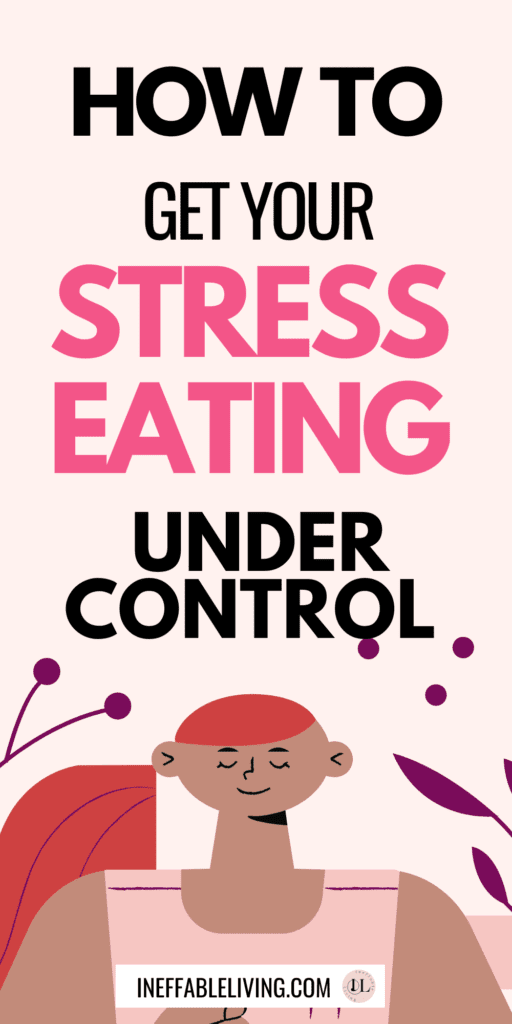
References
- Portions of this article were adapted from the book The Emotional Eating Workbook, © 2016 by Carolyn Coker Ross. All rights reserved.
- Emotional Eating – HelpGuide.org
- Weight loss: Gain control of emotional eating – Mayo Clinic
- Emotional Eating: Why It Happens and How to Stop It (healthline.com)
- Tips on How to Stop Emotional Eating (webmd.com)
- Emotional eating – Wikipedia
- How to Stop Emotional Eating From Stress (verywellmind.com)
- Struggling with emotional eating? – Harvard Health
- Emotional Eating: 9 Ways to Stop It and Lose Weight (psycom.net)
- Why stress causes people to overeat – Harvard Health
